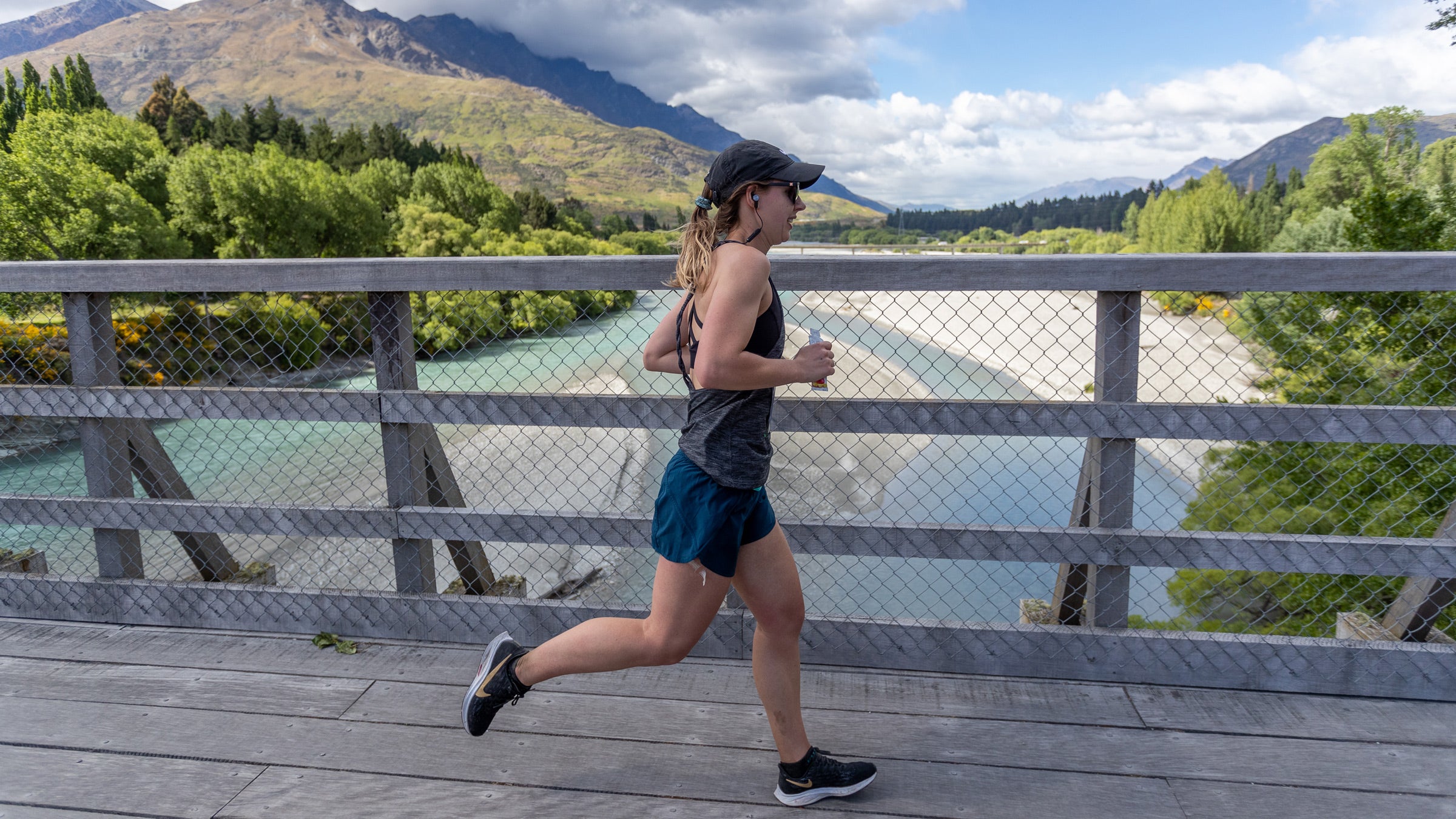How Running Gait Influences Speed and Fatigue

(Photo: (Photo by James Allan/Getty Images)
Running is one of the more popular recreational activities all over the world and, as one-third of a triathlon, is very familiar to multisport athletes. Yet, despite the fact that, of the three sports, running requires no specific instruction, triathletes frequently have a love-hate relationship with running and often struggle to do it well.
Much of this conflict is rooted in the fact that running, at least running fast, is for most people not very comfortable and often associated with the development of injuries. A couple of recent papers published in physiology journals give some insights as to how runners can run faster and how those who run slower can do so with less fatigue and possibly less risk of injury.
Most are familiar with the 2-hour marathon project that Nike sponsored last year, which culminated with Eliud Kipchoge successfully eclipsing the 2-hour mark for 26.2 miles. As part of that endeavor, scientists gathered all manner of physiologic and biometric data on all of the runners who participated in the effort, as a means of trying to define what was needed to accomplish this feat. Among the astonishing VO2 and speed data there was some really interesting observational biometric data related to running efficiency that is very pertinent to runners and triathletes who want to go faster.

First and foremost, the investigators noted that among the ten runners in the Breaking2 project, four were heel strikers and the remaining six landed on the forefoot or forward. The authors noted that this is consistent with observations done at the 2017 IAAF World Championships, where 60% of men’s marathon runners displayed a rear foot strike, including the top four finishers. This is counter to a lot of the prevailing wisdom that suggests that heel striking is deleterious not only in terms of injury but also with respect to speed.
Another interesting observation from the Breaking2 data was that the best running economy was seen in runners who had the shortest amount of ground contact time and the least amount of vertical oscillation in their steps. Maintaining a longer flight phase means there is less time for the foot to be in contact with the ground, meaning less braking and more time for the body to move forward. Less vertical movement is simply a reflection of energy being dedicated to forward movement instead of up and down.
A second paper unrelated to the Breaking2 project also looked at running mechanics but this time in runners moving much more slowly.
The authors in this Belgian paper noted, quite astutely, that very few people run like Kipchoge and his pacers. Reviewing worldwide results from running races, they found that 50% of runners finish a 5K between 23 and 30 minutes, with fully 25% slower than that. Similar pace findings are seen across all race distances with marathon times being even slower. Consequently, it is potentially more interesting to look at the mechanics of how runners in this much larger group move than it is to look at those who move so much faster.
In doing this, the researchers found that slower runners had a very different gait than fast runners. Slower runners tend to shorten the flight phase to the point that many slow runners have no flight phase at all. That is to say, the vast majority of runners have one foot in contact with the ground at all points of their gait.
Using force measuring treadmills and accelerometers attached to the legs of runners, the researchers compared this ground running technique to faster paced ‘aerial running’ with a flight phase and found some important differences.
Grounded running causes significantly less loading on the lower legs, resulting in much lower muscular and skeletal loading. The authors hypothesize that this is a significant advantage as it could allow for much less fatigue over time and potentially decrease the likelihood of running injuries related to repeated stresses on the weight-bearing structures of the feet, ankles, and knees. It was particularly hypothesized that older and more overweight runners benefit in this regard.
Interestingly, despite the decreased muscle efforts, energy expenditure was actually slightly higher for runners who used the grounded running technique, as opposed to when they ran with a flight phase, but the authors proposed that this may have been due to the fact that none of the runners in this study used grounded running naturally and that the mere act of forcing themselves into this gait may have required slightly more effort.
Still, the deliberate change in running pattern decreased musculoskeletal loading drastically with a decrease in impact loading of more than one-third and in muscular loading of one-fifth to one-third. These large reductions could easily be appreciated to have implications for delaying the onset of muscle fatigue as a limiting factor in longer races.
Certainly, anyone who has completed an Ironman is familiar with the ‘Ironman shuffle’ that many competitors will adopt late in the marathon. This is simply grounded running as a means to lessen musculoskeletal loading and prevent additional fatigue.
It is important to note that in this study, runners were able to perform grounded running only at slow speeds. To maintain any pace quicker than around 10:00 minutes/mile a flight phase was necessary.
The lessons to be learned from these studies are that in order to be a fast runner it is important to maximize running economy, and minimize vertical movement and ground contact time. But for those who are running more slowly, the opposite becomes important: grounded running, where one foot is always in contact with the ground and there is no flight phase, can decrease muscular fatigue and potentially the risk of injury and allow for runners to complete their races feeling strong and healthy.
The MedTent will answer your science and medical triathlon-related questions. It’s written by Jeff Sankoff, an ER physician, triathlete, and coach who runs TriDoc coaching and hosts the TriDoc podcast.